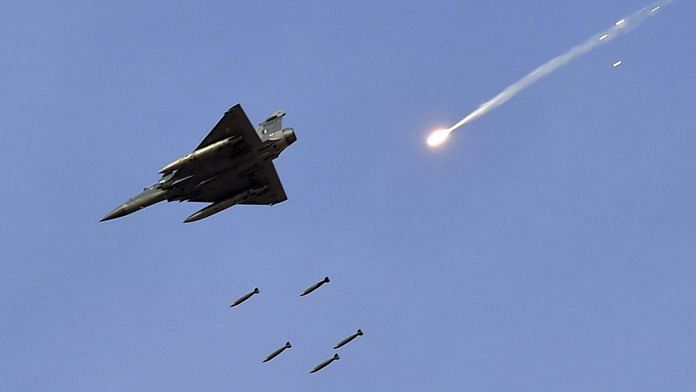New Delhi: As the enormity of the deadly Pulwama terror attack dawned on the Indian defence establishment on 14 February, the military brass knew this was something that couldn’t go unanswered.
Within hours, the top hierarchy in the Army, the IAF and the Navy had drawn out their ops plans, which would be discussed the next day at the Cabinet Committee on Security chaired by Prime Minister Narendra Modi.
Sources said the CCS deliberated on the diplomatic efforts that needed to be taken in the wake of the Pulwama attack, but a decision was taken to respond militarily.
Over the next few days, the top hierarchy in the Ministry of Defence and the Prime Minister’s Office brainstormed over the options on the table and a decision was taken to use the IAF for carrying out the strike.
Also read: IAF’s Balakot strike lasted 21 mins, used 1,000 kg Israeli bombs fed with GPS coordinates
Weather and odds stacked against Army
The 2016 surgical strike into Pakistan-occupied Kashmir (PoK) by the Army’s Special Forces had taken the Pakistani military by surprise.
Having learnt a bitter lesson, Pakistan was well prepared this time around. The Pakistan Army was put on high alert and the Indian Army had lost the advantage of surprise.
As tension mounted, the Pakistan Army cancelled the leaves of all soldiers and even replaced Pakistan Rangers, a paramilitary force, with regular soldiers at many places on the LoC and the International Border.
Also, Pakistan had moved back terrorists from training camps and launch pads within Pakistan-occupied Kashmir to prevent another surgical strike.
Another big handicap for the Indian Army was the fact that there had been heavy snowfall, which would have hampered movement by foot.
Issues with Navy deployment
The use of the Navy to carry out a blockade of Pakistan’s financial nerve centre, Karachi, was also among the options considered.
However, this idea was shot down because it could easily have spun off into an international crisis, as other countries would have got into the picture. Another worry was that a naval blockade could also be perceived as an act of war.
What went in favour of IAF
Air Chief Marshal B.S. Dhanoa had made it absolutely clear that his force was capable of striking at terror camps in Pakistan-occupied Kashmir, as long as a pin-pointed location was provided.
He also said that IAF jets would not have to cross Indian air space to carry out the strikes. The IAF, which had not crossed the LoC since the 1971 war, had made a lot of war plans over the decades keeping in mind its own dwindling strength and the air defence prowess of Pakistan.
After deliberating, the Army along with the National Technical Research Organisation and the R&AW were tasked with giving the exact location of the target, which fit right into the IAF’s plans.
Also read: Balakot is the first time one nuclear power has used air strikes on another’s territory






